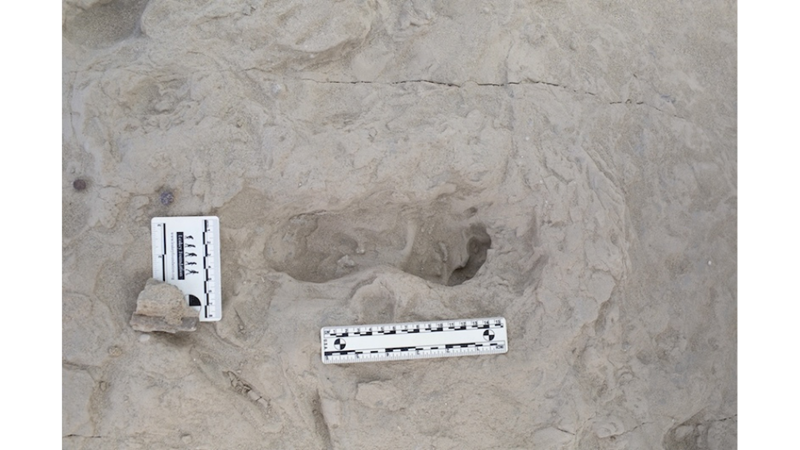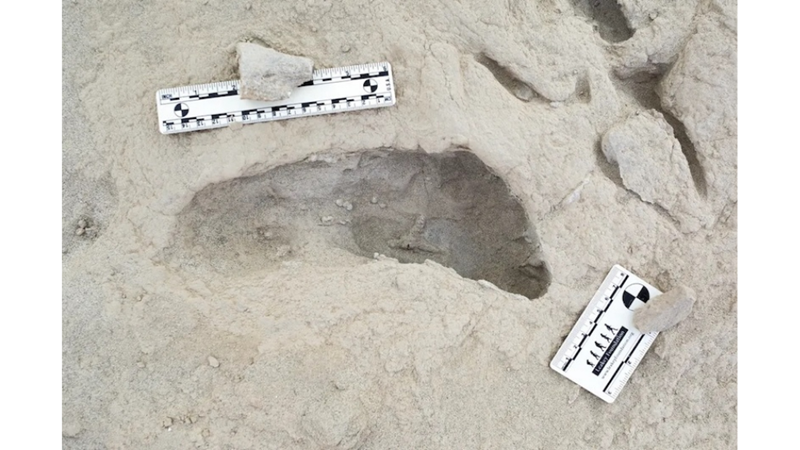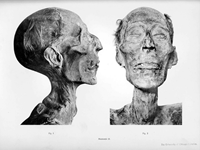A group of footprints discovered in the Koobi Fora region of Kenya reveals that our ancestors Homo erectus lived 1.5 million years ago at the same time as Paranthropus boisei, a now extinct hominin that walked on two legs.
This discovery represents a first in fossil research. By examining these 1.5 million-year-old footprints found in Kenya, the researchers suggest that two different proto-human species may have lived at the same time and may even have interacted. This finding raises new questions about the behavior and social relationships of our ancestors.
“I think these two species lived in the same natural environment and were aware of each other's presence. They probably even perceived each other as 'different',” says Kevin Hatala, a paleoanthropologist at Chatham University in Pennsylvania.
DISCOVERY OF FOOTPRINTS
A research team led by Kevin Hatala analyzed the footprints discovered in 2021 in the Koobi Fora region on the eastern shore of Kenya's Lake Turkana and published their findings in the journal Science.
Important fossil footprint discoveries have been made in East Africa before. For example, the famous Laetoli footprints in Tanzania were left by Australopithecus afarensis (Lucy's species) 3.6 million years ago. But the footprints found in Koobi Fora were markedly different: In the mud by the lake, within a few hours of each other, two very different footprints of two different bipedal species were found.
Koobi Fora was home to various hominin species for around 3 million years. The fossil record from the region includes two Australopithecus species and four different species of the genus Homo. However, due to incomplete and scattered fossil data, paleoanthropologists were unable to clarify which species lived together in the same period.
The newly discovered Koobi Fora footprints form a path about 8 meters long. It included nearly a dozen footprints of one individual and three separate footprints left by three other individuals. Interestingly, an extinct giant marabou stork (Leptoptilos falconeri) also passed through this muddy area and left its own tracks.
Hatala and his team used 3D imaging techniques to study the tracks' shapes and gait patterns. The two tracks showed a high arched foot structure and a walking style that progressed from heel to toe, as seen in modern humans. These tracks could have been made by Homo erectus, which had human-like body features and dimensions.
In contrast, the other pathway, which included a dozen tracks, revealed a different structure. These tracks showed a deeper contact in the forefoot area and indicated that the big toe was slightly turned outward, not completely aligned as in the human foot. The researchers suggested that these tracks could belong to Paranthropus boisei, a species with features such as a large jaw and a large toe.
The footprints were found to vary in size, but there was not enough data to conclusively determine their age or sex (e.g. male, female or child). The size of the prints thought to belong to Paranthropus boisei corresponded to about 42-43 size shoes, while the Homo erectus prints were smaller and corresponded to about 36-38 size shoes.
Behavioral and Anatomical Clues
Paleoanthropologist Zach Throckmorton from Colorado State University says that these footprints provide strong evidence that Homo erectus and Paranthropus boisei lived in the same environment in Koobi Fora 1.5 million years ago. He also points out that the stability of the big toe in humans is a critical adaptation to prevent foot problems during walking and running. He underlines that the tracks attributed to Paranthropus boisei lack this adaptation.
These tracks provide information not only about anatomical differences, but also about the behavior of our ancestors. “Footprints are like a frozen photograph of a moment,” says paleoanthropologist Jeremy DeSilva of Dartmouth College. “This study reveals that two different hominin species not only lived in the same period, they shared the same environment and had slightly different ways of walking. I wonder what they thought about each other and how they interacted.”
Hatala notes that such interactions may have been similar to those between chimpanzees and gorillas. However, the fact that the tracks were made within a few meters of each other and over a short period of time suggests that Homo erectus and Paranthropus boisei may have had a much closer relationship than we think.
“It's fascinating to imagine what they felt when they saw each other and how they communicated,” Hatala adds.
Source: arkeofili.com


 Nielawore
Nielawore










Yorum yazmak için lütfen giriş yapınız